News archives
IMC 2025: call for abstracts
International Mountain Conference: September 14 – 18(19) 2025, Innsbruck, Austria
Abstract submission: open, until Feb 20, 2025

With a focus session, a workshop and a field trip on alpine treelines:
Focus session "Creating knowledge about alpine treeline ecotones in changing mountains"
Workshop "Synthesizing knowledge about alpine treeline ecotones in changing mountains"
Field trip to the Stillberg treeline experiment, near Davos, Switzerland (preceding the conference on Sept 12)
For more general information about the conference please visit the IMC 2025 website.
Treeline special issue in Biogeosciences
"Treeline ecotones under global change: linking spatial patterns to ecological processes"
A special issue on
"Treeline ecotones under global change: linking spatial patterns to ecological processes",
in the journal Biogeosciences is now open for submissions. This special issue emerged
as a result of the treeline session at the EGU General Assembly 2024, but it is open for additional contributions.
Issue editors are Matteo Garbarino (University of Torino) and Frank Hagedorn (WSL).
Treeline session at EGU 2024
"Treeline ecotones under global change: linking spatial patterns to ecological processes"

By: Johanna Toivonen, May 3, 2024
Convener team of the EGU24 treeline session. (Photo: Diana Tomback)
In April 2024, an interesting and well-attended treeline session, called “Treeline ecotones under global change: linking spatial patterns to ecological processes” , took place at the European Geosciences Union (EGU) generall assembly in Vienna.
The EGU is one of the biggest geoscience conferences worldwide. It covers all disciplines of the Earth, planetary, and space sciences, bringing together geoscientists, geographers, ecologists, etc., from all over the world. This year, more than 18 000 attendees from 116 countries met physically in Vienna and a couple of thousand more joined online.
EGU puts a special emphasis on Early Career Scientists (ECS) and this year more than half of the abstracts mentioned an ECS contribution. We also emphasised ECS contributions in the oral presentations of our treeline ecotone session and between the poster and oral presentations we had a pleasure to hear 12 excellent presentations of ECS attendees.
The room was full and we got interesting questions and discussions during and after the session. Similarly, the poster session was very lively. Each poster author presented their poster in turn and people followed the presentations intensively.
The 10 posters and 10 talks presented recent and ongoing research across scales of treeline ecology from local drivers of tree recruitment (Sindewald et al, Tomback et al, Ramírez et al) through landscape-scale ecotone patterns (Carrieri et al, Bader et al) and regional-scale patterns of treeline change (Delpouve et al, Maroschek et al, Nguyen et al) to large-scale patterns across whole mountain ranges and beyond (Urbinati et al, Baglioni et al, Kruse et al, Corimanya et al, Zou et al). Methods presented included remote sensing (many posters and talks), including very-high-resolution drone-based remote sensing (Carrieri et al), modelling (Bader et al), dendroecology (Oberhuber et al, Vitali et al, Liang et al), field inventories (Ramírez et al, Tomback et al, Varsova et al).
We also met with part of the session participants for a "treeline dinner" after the session. A lively discussion continued
there about diverse treeline and other topics. On the last day of the conference we got together again to discuss
about the contributions to the special issue of the journal Biogeosciences (see below) and other future collaborations.
Consensus was that in spite of much progress in recent years, a lot remains to be done and international
scientific cooperation will be key to unravel the
drivers and limitations of treeline dynamics in different parts of the world.
I think everybody traveled home with an overwhelming amount of new information, new ideas, and enthusiasm!
Johanna, on behalf of all the session conveners: Matteo Garbarino, Nicolò Anselmetto, Maaike Bader, Johanna Toivonen, Alessandro Vitali.
You can access the session abstract here (Terrestrial Biogeosciences section, Session Nr. 3.26) .
Treeline session at EcoSummit 2024

"Alpine-treeline dynamics – patterns, causes, and mechanisms"
We are welcoming contributions to a treeline session at the
EcoSummit conference 2024.
The conference will take place in ZhengZhou, China, December 14-19 2024.
The deadline for abstract submission is July 18th 2024.
Chair: Mai-He Li ; Co-chair: Johanna Toivonen
You can access the session abstract
here
.
Treelines at IMC 2022
"Alpine Treeline Ecotones under Global Change" session at the International Mountain Conference 2022 in Innsbruck
By: Maaike Bader, September 20, 2022
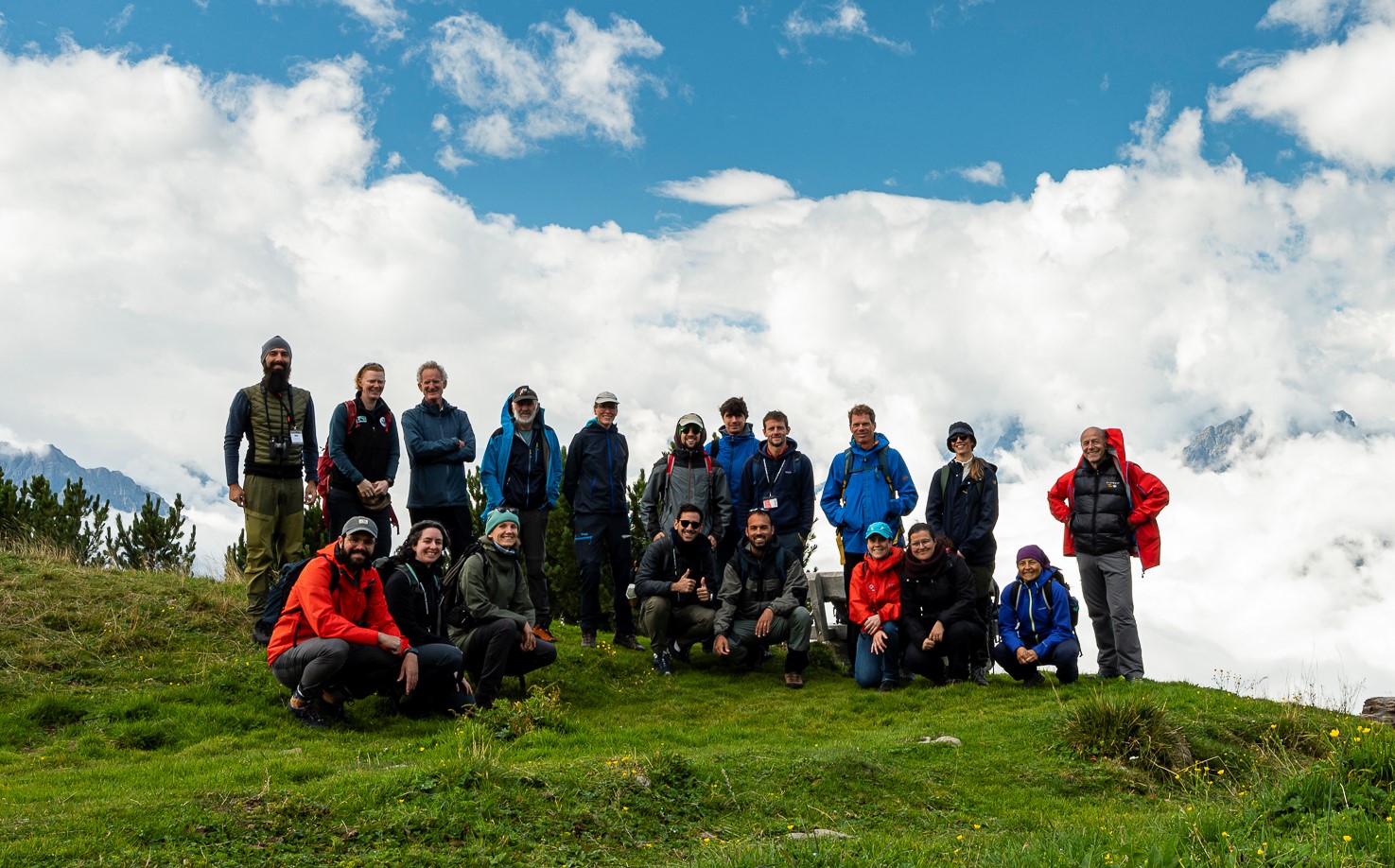
Treeline excursion 2022 to Mt. Patscherkofel. Photo taken at the same location as in 2019 , looking west down into the Inn valley west of Innsbruck. A few more clouds than in 2019, but after expecting lots of rain, we particularly enjoyed the mostly sunny day and great views. (Photo by Michael Maroschek)
A focus session on “Alpine Treeline Ecotones under Global Change“ took place at the International Mountain Conference 2022 (Innsbruck, 11-15 Sep 2022).
Being one of the largest focus sessions at the conference, it presented 18 posters with 3-minute flash talks and seven longer talks – the titles and abstracts of which can be downloaded here.
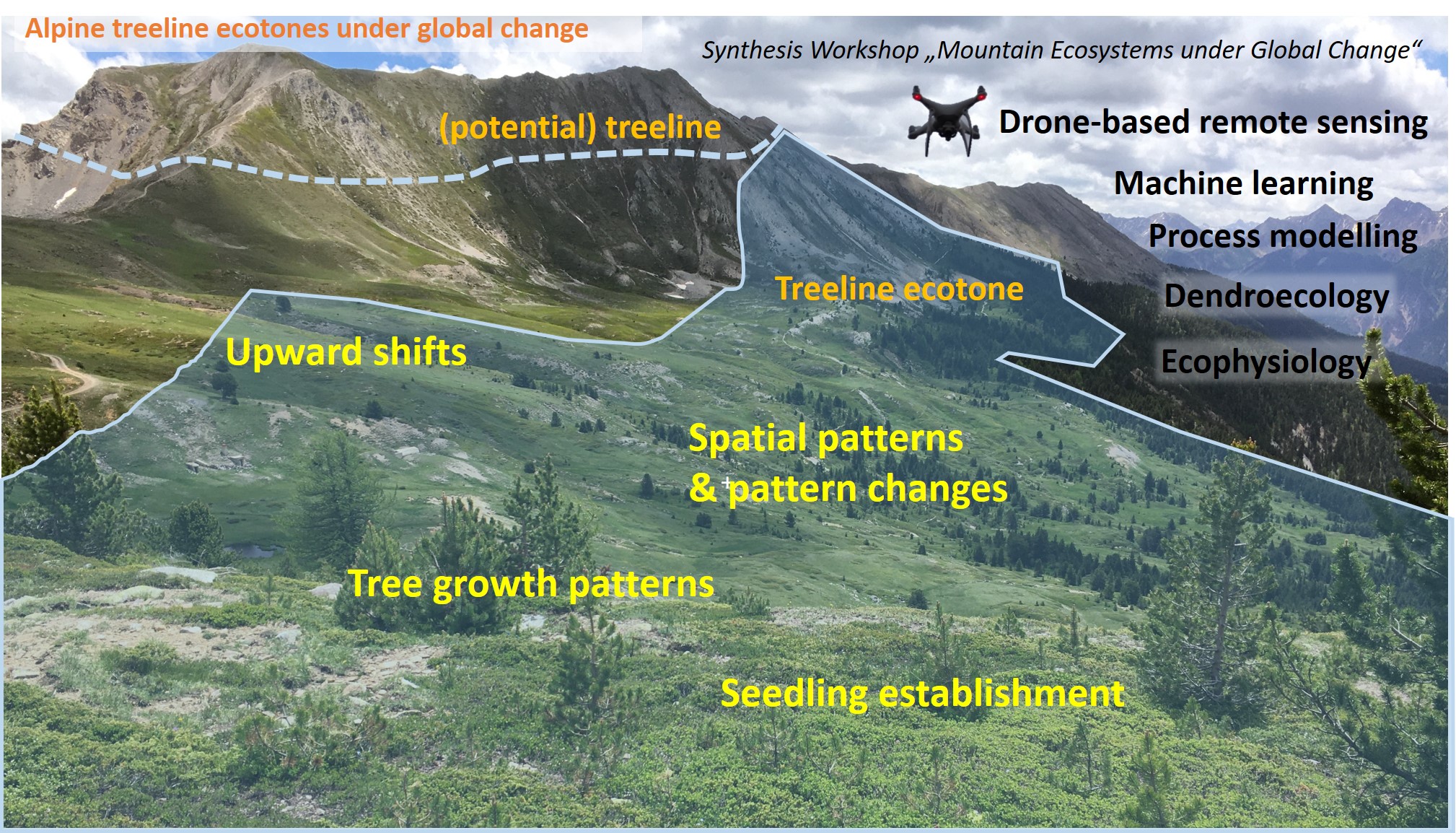
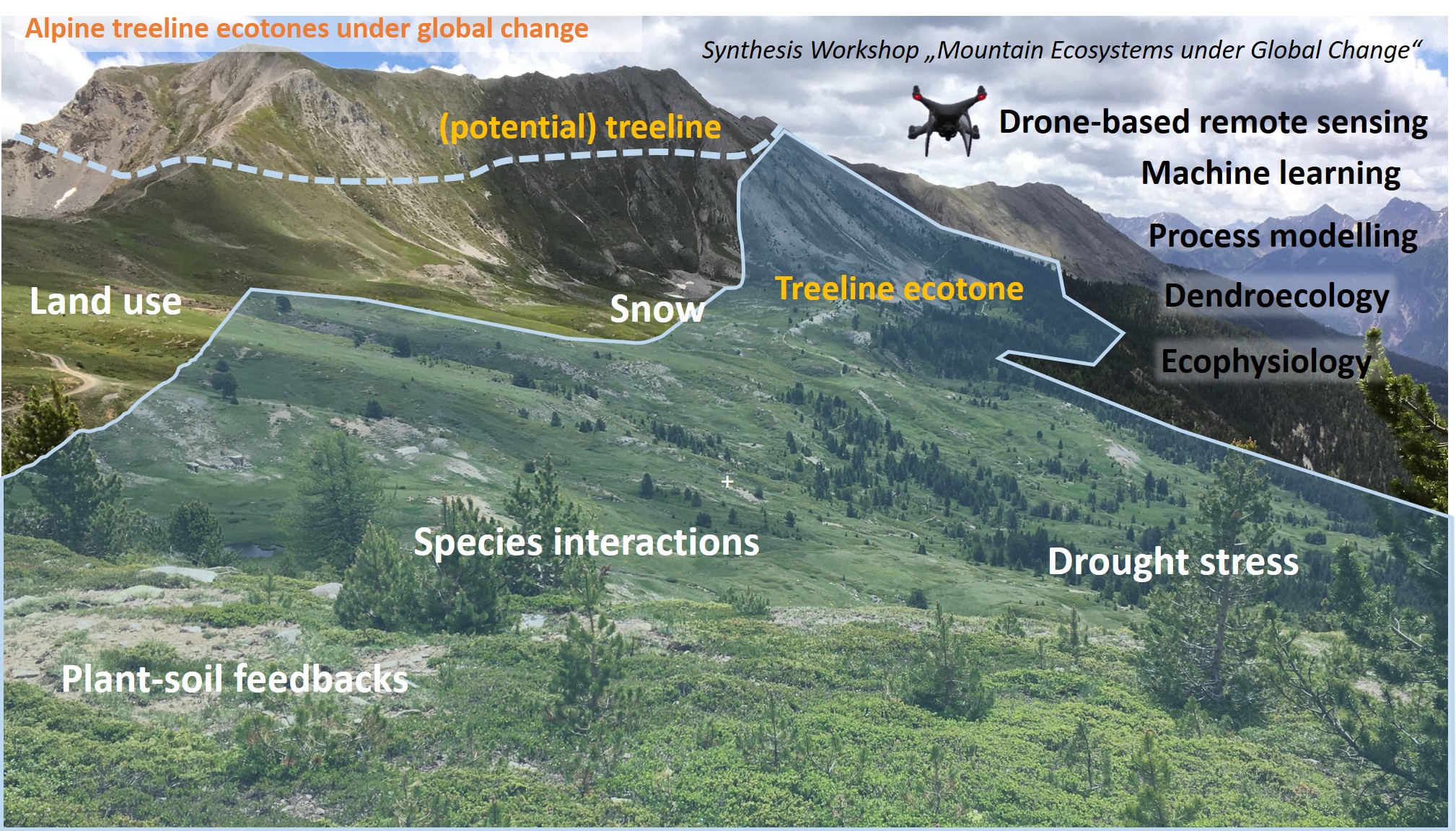
MRI Synthesis workshop 2022
"Mapping mountain vegetation using very-high-resolution remote sensing: Challenges in global data access and image classification"
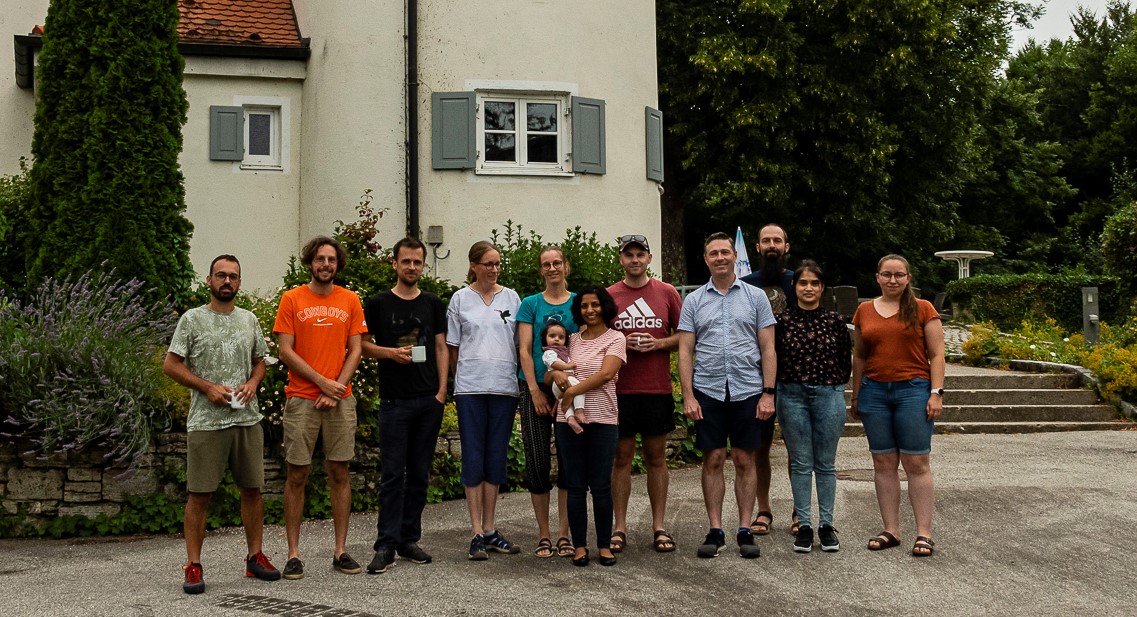
Treeline very-high-resolution remote sensing workshop, 2022 in Kochel am See. (Photo: Nishtha Prakash)
A synthesis workshop on very-high resolution remote sensing of treeline ecotones and alpine vegetation, organised by the University OF Marburg, Germany, and the University of Turku, Finland, with the support of the Mountain Research Initiative (MRI) took place from July 18 - 22 2022 in Kochel am See, at the northern edge of the Alps in Germany. It had a partially hybrid format to enable online access to the presentations and some of the discussions.
Key words: alpine vegetation, treeline ecotone, fine-scale vegetation mapping, remote sensing, machine learning, pattern analysis
Mountain plant populations are already observed to shift uphill due to climate change, with resulting changes in vegetation composition and functionality. In addition, local shifts to suitable microsites, functioning as local refugia, may reduce the overall risk of extinction for mountain species. Characterizing fine-scale spatial patterns in vegetation cover, emerging through microsite preferences and spatial ecological processes, is therefore important to understand alpine vegetation dynamics and to predict the future of the alpine zone. To characterize and monitor such patterns, very-high-resolution remote sensing (i.e. with spatial resolutions < 0.5 m) offers great promise, in particular in the fine-grained alpine vegetation above the closed forest. However, two big challenges need to be overcome before this potentially fantastic resource can be applied to map vegetation cover and to monitor change in mountains globally: the availability of and access to these data, and the analysis of the images in terms of recognizing and delineating vegetation types and, in the case of larger species like shrubs, trees, cushion plants and giant rosettes, individuals.
In this workshop the group addressed these two challenges by discussing the following questions:
1. What very-high-resolution data are available in different mountain areas of the world and how can we help to increase their accessibility?
2. What data sources (e.g. satellite-based vs. drone-based) and methods are most suitable to map small-scale patterns in vegetation cover from the treeline ecotone into the alpine zone?
Additionally, in the absence of easily available fine-scale imagery, how can readily available coarser-scale data be used to learn more about the fine details of alpine vegetation patterns?
3. How can treeline researchers collaborate to map vegetation in alpine treeline ecotones in different parts of the world?
The program included presentations and lively discussions, as well as a one-day excursion to the treeline ecotone on the nearby Zugspitze range (highest mountain of Germany). There were 11 on-site participants from five countries (New Zealand, Italy, Switzerland, Norway, Finland, and Germany), or eleven countries if counting nationalities. Researchers from eight countries registered to attend the online sessions and contributed with questions and comments for the presenters of the talks. The additional diversity in career stages and research foci assured a rich and enriching workshop. The group will consolidate and share the findings of the workshop as well as further discussion in a research paper.
The organizing team: Nishtha Prakash, Maaike Bader (University of Marburg, Germany), Johanna Toivonen (University of Turku, Finland)
See also the MRI Website
Back to topMRI Anniversary Lecture on treeline patterns
"The stories that alpine treelines can tell - interpreting spatial patterns of treeline ecotones"
Presented by Maaike Bader, April 28, 2021, 15:00 — 16:00 CEST
A recording of the lecture is now available at
the Mountain Research Initiative (MRI) website.
New treeline pattern paper out!
"A global framework for linking alpine-treeline ecotone patterns to underlying processes", Ecography
Posted by: Maaike Bader, November 10, 2020
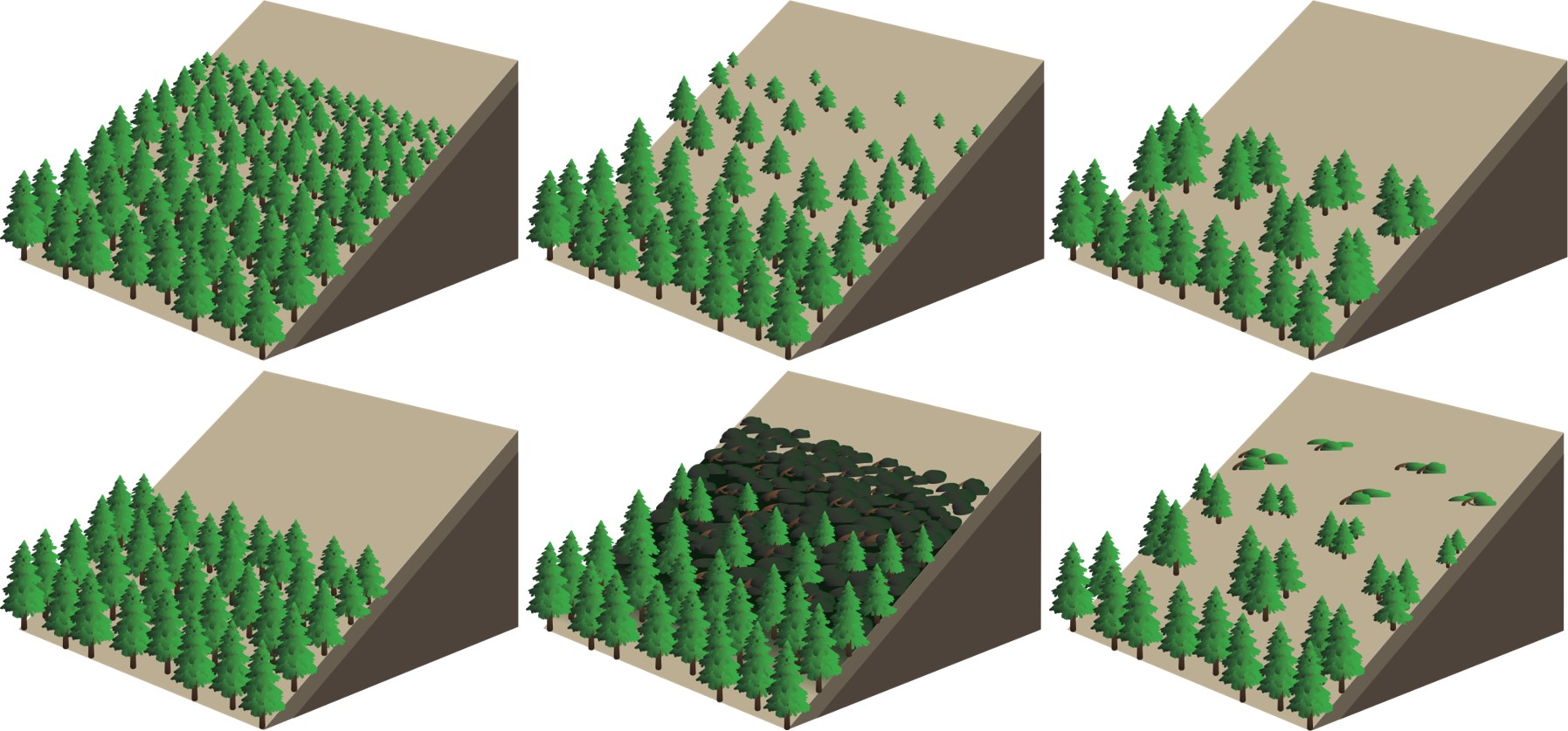
Examples of treeline forms as described in the new Ecography paper. From left to right and top to bottom: gradual treeline, diffuse treeline, abrupt tree-island treeline, abrupt treeline, abrupt diffuse treeline in shrub matrix, krummholz-island treeline. From Bader et al, early view.
We are very happy to announce the publication of our new paper (open access in Ecography, for download here) addressing the pattern dimensions that we think are most indicative of the processes forming spatial patterns in alpine-treeline ecotones, and redefining some terminology for describing treeline spatial pattern or "form". This paper is the culmination of our discussions during several workshops in the past years, starting with the MRI synthesis workshop in Jaca, Spain, in 2017, followed by the two sTreelines workshops at sDiv (iDiv, Leipzig, Germany) in 2018 and 2019 and a workshop organised by Bradley Case in Hanmer Springs, New Zealand, in 2020.
Apart from defining four main pattern dimensions (two in the x-y plane: 1) changes in tree cover, and 2) changes in the level of clumping; two in cross-section: 3) changes in tree height, and 4) changes in tree shape), we here also suggest a more precise terminology for describing treeline forms. In particular, we suggest to use two different terms for describing the smoothness of the transition: if there is a sudden strong frop in tree HEIGHT the treeline is "abrupt", but if only the decrease in tree COVER is sudden and strong, this treeline is "discrete". If both change suddenly and strongly, the treeline is still "abrupt", because we consider discreteness as the default. At the other end, if tree HEIGHT decreases gradually, the treeline is "gradual", but if tree COVER decreases gradually, the treeline is "diffuse". If both decrease gradually, the treeline is still "diffuse", because we consider a gradual height decline as the default. Now one can guess what an abrupt diffuse treeline looks like... Additionally, there are tree-island and krummholz-island treelines and some other forms... I recommend reading the paper for more details and further insights :-)
You may also check out our blogpost on the Ecography website.
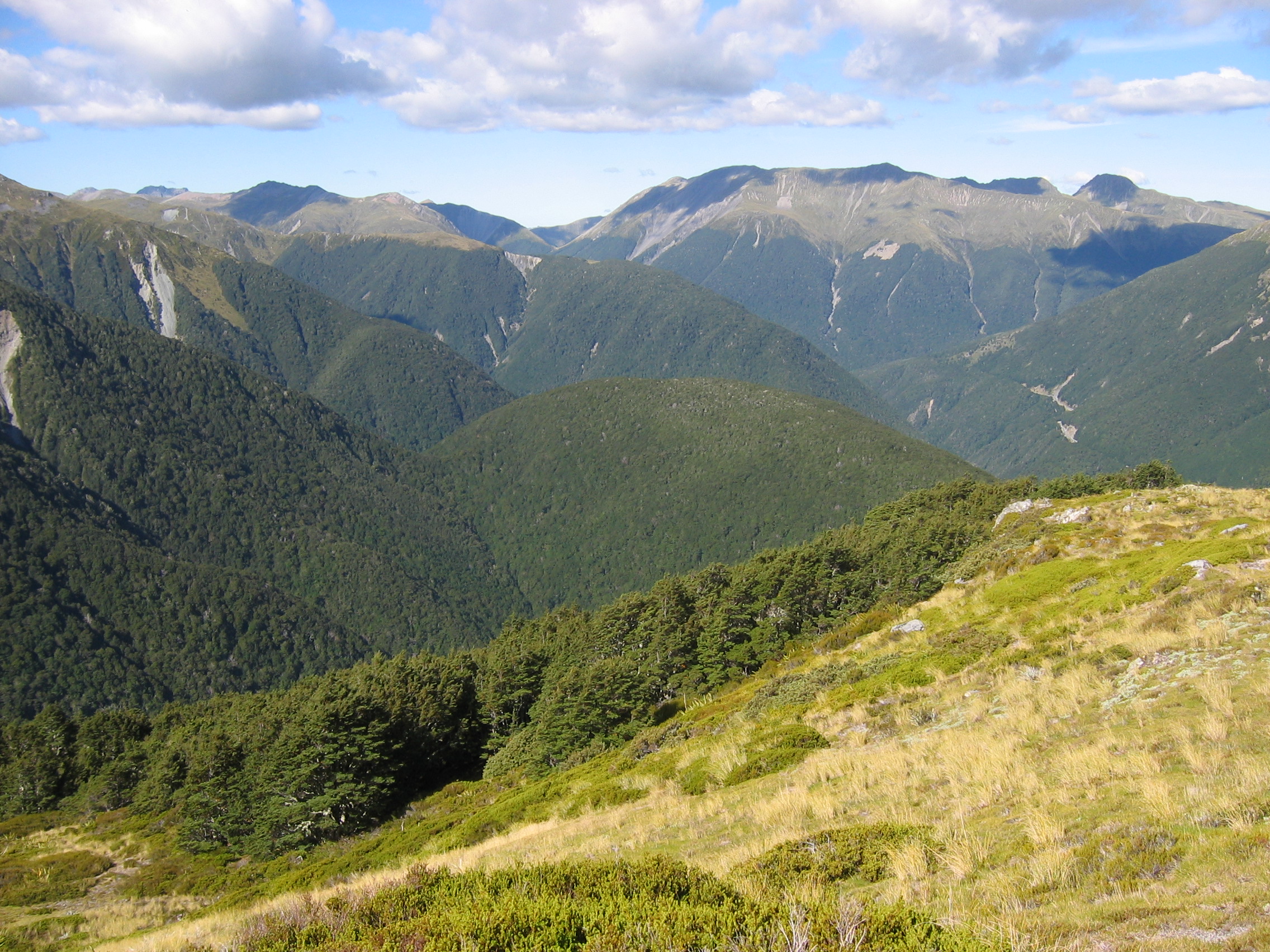
An abrupt (and discrete, which is the default so it does not need to be mentioned) treeline formed by Lophozonia menziesii (Nothofagaceae) near Lewis´ Pass on the South Island of New Zealand.
Reference: Bader, M.Y., L.D. Llambí, B.S. Case, H.L. Buckley, J.M. Toivonen, J.J. Camarero, D.M. Cairns, C.D. Brown, T. Wiegand and L.M. Resler (2021) A global framework for linking alpine-treeline ecotone patterns to underlying processes. Ecography 44(2): 265-292, DOI 10.1111/ecog.05285.
Back to topTreelines at IMC 2019
"The Future of Mountain Forests" workshop at the International Mountain Conference 2019 in Innsbruck
By: Maaike Bader, September 19, 2019
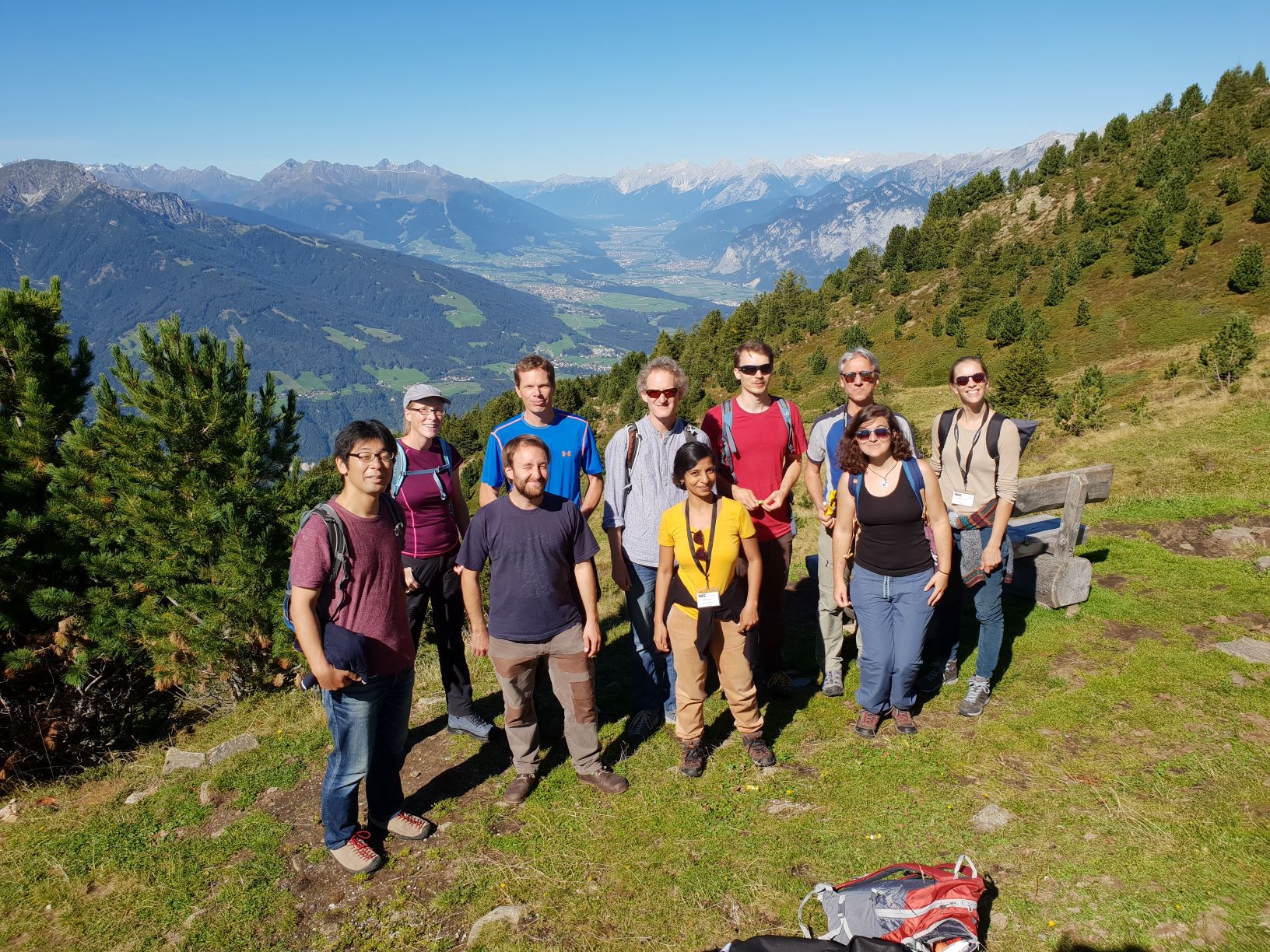
Treeline excursion with some of the workshop participants to Mt. Patscherkofel. Photo looking west down into the Inn valley west of Innsbruck. Tree species: spruce (Picea abies) and, most abundant at the highest elevation, Swiss stone pine (Pinus cembra).
At the International Mountain Conference, held in Innsbruck from September 9 to 12, 2019, treeline and mountain forest researchers from many parts of the world (including Japan, Australia, Venezuela, Brasil, Italy, France, Finland, Germany, and of course Austria and Switzerland) met in and around the "The Future of Mountain Forests" workshop and poster session, the program of which can be downloaded here.
The workshop, attended by about 100 people, including presenting participants and public, was divided by the moderators into three topical sections: treelines, stress and disturbance, and management. Apart from short (3-minute) presentations, the workshop consisted of discussions about the importance, main factors and research needs for each topic. Treeline-related presentations addressed drivers of treeline shifts, including those affecting seedling establishment (viable seed availability and interactions with alpine vegetation) and those affecting tree growth (drought, growing-season temperature, frost damage, competition), as well as landscape-scale variation in tree performance (establishment or persistence) at treeline and the role of topography and potential indicative value of treeline ecotone spatial patterns. Of course there was a lot of thematic overlap between the sections, the treeline section including contributions about stress and the management section including various contributions about disturbances (the function of forests killed by bark beetle outbreaks or otherwise affected by climate change and disturbances on forest protective functions) and one about montane forest-grassland ecotones (Brasilian Antlantic forest fragments that are stabilised in a grass matrix) with properties and processes potentially resembling those at alpine treeline ecotones.

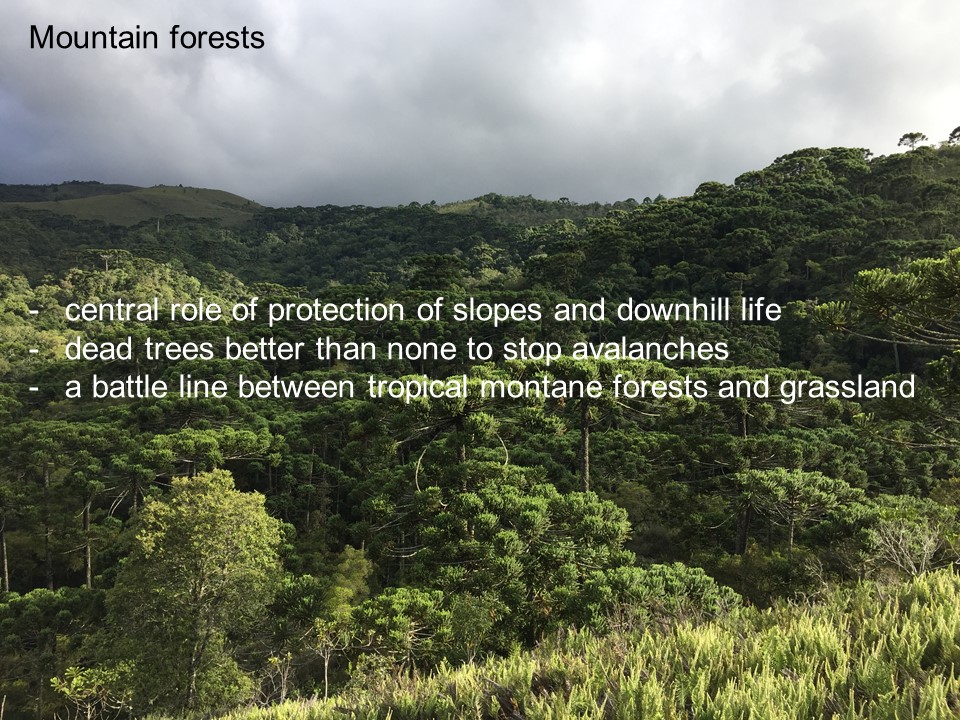
The main research needs related to treelines that were identified include: more attention for soil processes, nutrients and mycorrhiza; using demographic processes and age structures to understand treeline dynamics; using spatial patterns and dynamics for understanding processes; identifying species-specific requirements for recruitment; identfying species-specific growth responses to e.g. temperature, moisture and stress and disturbance factors; identifying sensitivities specific to different ontogenetic stages; understanding (historic) land-use effects; improving the global coverage and distribution of research efforts.
On Friday, some of us took advantage of the great weather to visit Mt. Patscherkofel, passing through a treeline ecotone quite strongly determined by former land use and arguably restricted in its advance due to the "summit syndrome" present on this Föhn- affected rounded mountain. What is likely not limiting here is seed dispersal, judging from the high abundance of nutcrackers, which can disperse Pinus cembra well into the alpine zone. Apart form the close-by view, Mt Patscherkofel provided wonderful views of the surrounding mountains and treeline ecotones. We discussed how much of the landscape has been completely deforested a few centuries ago and the implications for our interpretation of the current treeline ecotones in the Alps. Keep an eye out for the next International Mountain Conference (IMC 2022, Innsbruck, 12-15 Sept 2022).
Back to topLaunch of Alpine Treelines Online
The story behind this website
By: Maaike Bader, September 6, 2019

Treeline composed of larch (Larix decidua) and mountain pine (Pinus uncinata) near the Lautaret Pass, French Alps. Picture taken from a South-facing looking at a North-facing slope.
The idea for this website was born during a synthesis workshop about treeline spatial patterns , held in Jaca (Spain) in 2017. We wanted to provide a platform to share data and exchange ideas about the patterns that can be observed in treeline ecotones (= ecological transition zones) worldwide and the processes that form these patterns and that also determine treeline dynamics. Apart from our scientific interest in understanding the ecology of treeline ecotones, another motivation for this is that alpine (and arctic) treelines, being strongly controlled by climate, are likely to be directly affected by climate change. Expected is an upward (or poleward) shift in treeline position as more warmth becomes available for tree growth. However, the rate of such shifts depends not only on the temperature-controlled growth rate of the trees, but also on many other ecological processes such as seed production and dispersal, seedling establishment, interactions with neighbouring trees and other vegetation, seed predation and herbivory, climate-induced damage and geomorphic disturbances. Depending on the relative importance of these processes, treelines are expected to differ in their spatial patterns as well as dynamics in response to climatic change. This website aims to bring together information about the occurrence of different spatial patterns at treelines wordlwide, about known relationships between patterns and processes, and about methods to study such relationships.
A database facility for scientific data about treeline ecotones is planned for a later stage. At this stage, you will find a map of treeline sites (see Explore treelines) providing basic ecological information and images of these sites, and an invitation to contribute more sites to this map. This invitation is open to anybody that has visited or is planning to visit mountain areas with treelines and that is willing and able to follow the instructions provided (see Instructions for data contributors). The simplest form of instructions is: take a picture that shows the treeline, look up the coordinates of the site on Google Earth or Bing Maps, and send us the picture, site name and coordinates per email. While developing a more sophisticated data management system, we currenlty provide interested site contributors with an Excell file where additional information about e.g. climate and vegetation of the site can be filled in.
Several current research projects will also contribute to the database and to the development of methods to analyse the observed patterns, which will then be shared on this website as Resources. Once enough treeline sites are included in the database, this will be an important resource to detect global patterns in the distribution of spatial treeline types. Back to top